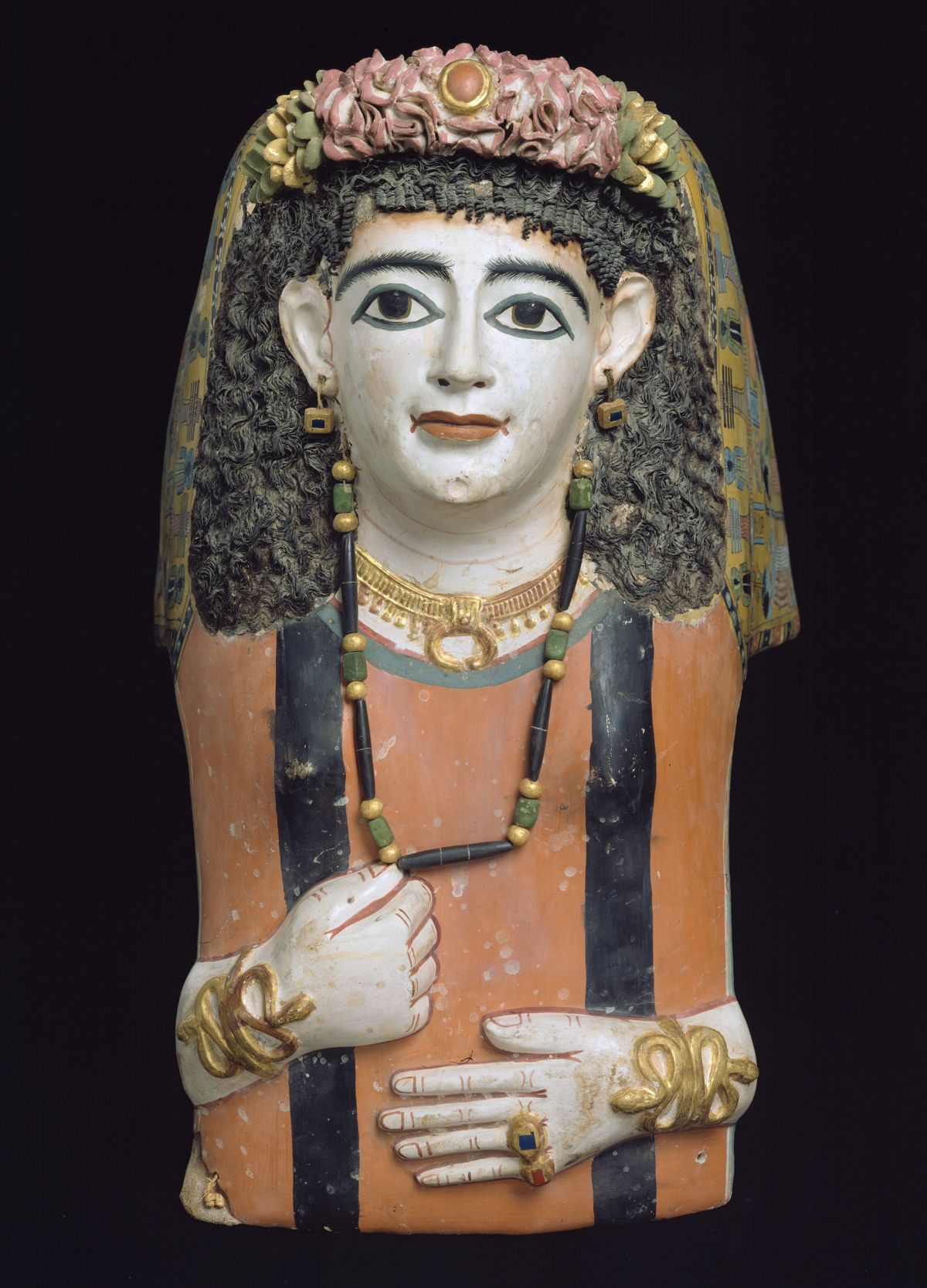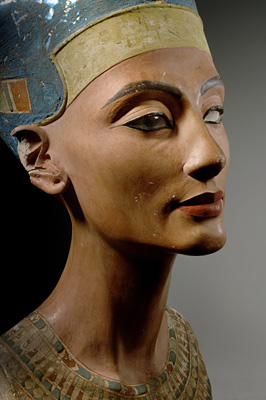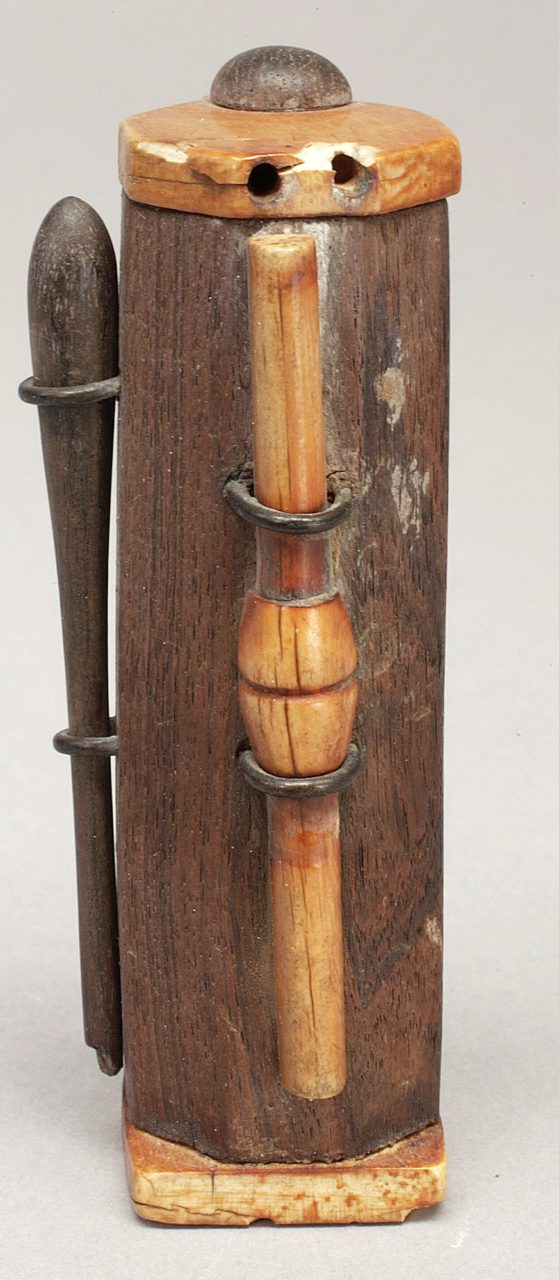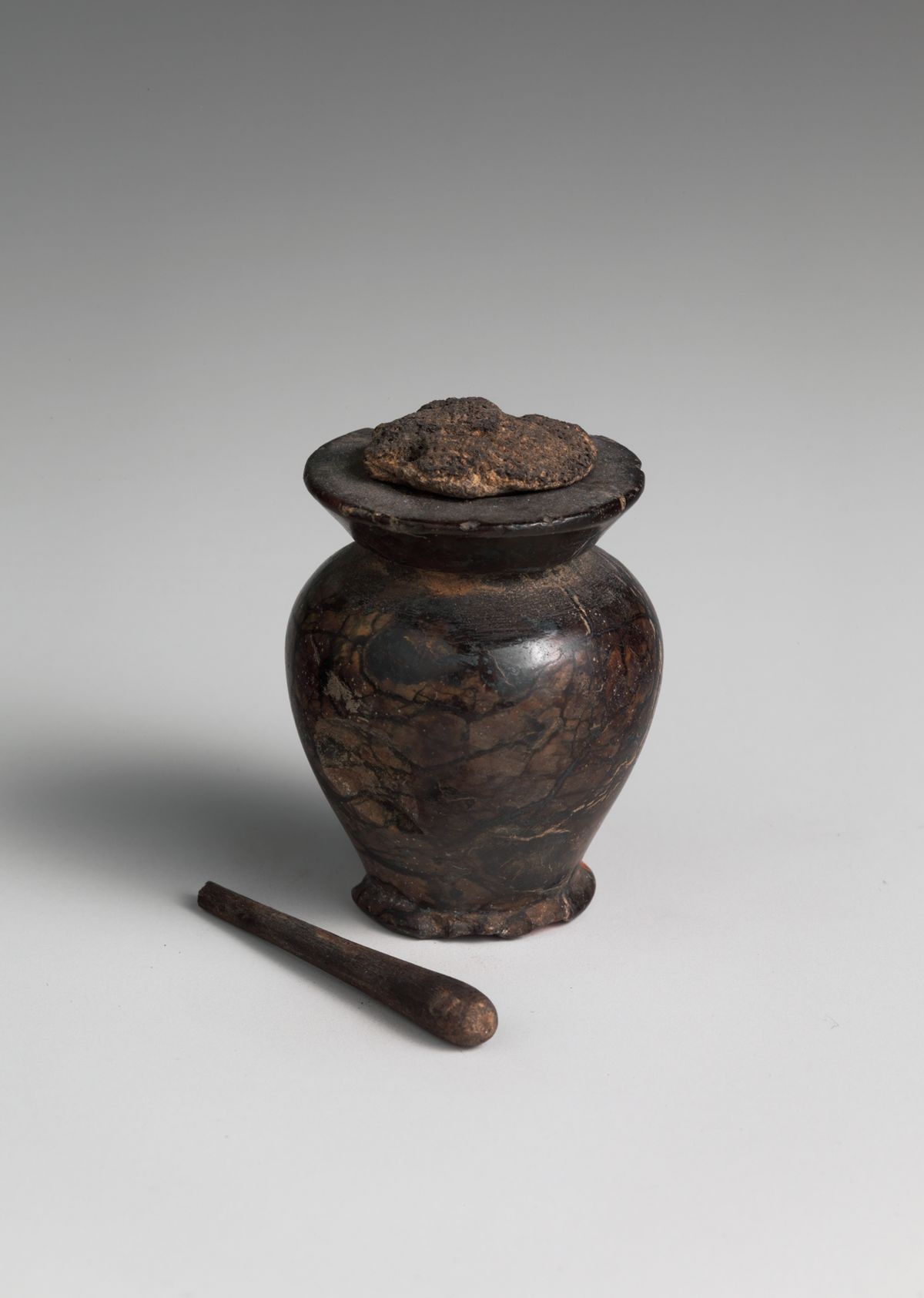A black material made out of minerals such as galena and used for eyeliner and eye protection in ancient Egypt.
The Details
Daniel Delis Hill’s History of World Costume and Fashion (2011) explains Egyptian cosmetics and the use of kohl:
“Cosmetics were worn by both women and men, most especially for enhancing the eyes and as protection from the glare of the sun. Eyeliner was made of powdered black kohl, an ore of lead, and eyeshadows were created by pulverized minerals such as malachite, lapis lazuli, or turquoise.” (3)
When Egyptians wore the kohl around their eyes, they had an unusual style of applying it. They would draw even lines above and below the eyes and slightly arch the ends. Kohl was so significant throughout the culture that even artwork depicted a face with the signature eyeliner, such as the mummy in figure 1. The famous Bust of Queen Nefertiti (Fig. 2) depicts Queen Nefertiti with bold black outlines on her eyes, which conveys that she also employed kohl.
In The History of Makeup: Classic Beauty (2011), Gabriela Hernandez provides in-depth information on the makeup used by wealthy Egyptian women, such as kohl:
“The toilette box of a wealthy Egyptian woman often contained pumice stones, eye paint applicators, mineral powder, palettes to mix colors, and containers of colored powder. These included the green mineral malachite, red ochre used as a rouge and lip colorant, and black powder eyeliner known as kohl made from soot, galena, and other ingredients.” (16)
Clearly, the use of face makeup and cosmetics is not a new concept. The History of Makeup: Classic Beauty allows for one to picture an ancient Egyptian woman enhancing her beauty with products like eyeliner, eyeshadow, lipstick, etc. Even the makeup containers such as the kohl container in figure 3 look similar to contemporary makeup tubes.
In Fashions in Makeup from Ancient to Modern Times (2003), Richard Corson describes how Egyptians used cosmetics on each part of their faces, including kohl on their eyes:
“Whatever else the Egyptians did or did not do, they seldom failed to line their eyes heavily with kohl- a black, grey, or coloured powder made variously of powdered antimony (stibium), black manganese oxide, burnt almonds, lead, black oxide of copper, carbon, brown ochre, iron oxide, malachite, and chrysocolla, a green-blue copper ore. The powdered kohl was kept in pots and tubes… moistened with saliva, and applied with a kohl stick of ivory, wood, silver, glass, or bronze… The kohl stick might be moistened and dipped into the tube or pot, or the powder might be poured into a cosmetics spoon or dish and moistened.” (9-10)
Kohl was such a staple item that it was inevitable that containers would vary, whether they were similar to contemporary makeup tubes or could be compared to miniature plant pots. Figure 4 and 5 show containers that look similar to pots, in which they may have been easier for one to mix and moisten the kohl in.
Fig. 1 - Artist unknown (Egyptian). Egyptian Mummy Mask, A.D. 60–70. Cartonnage, plaster, paint, plant fibers; l. 63 cm; w. 33 cm; h. 53 (l 24 13/16 in; w. 13 in; h. 20 7/8 in). New York: The Metropolitan Museum of Art, 19.2.6. Rogers Fund, 1919. Source: The Metropolitan Museum of Art
Fig. 2 - Thutmose (Egyptian). Bust of Queen Nefertiti, New Kingdom, Dynasty 18, ca. 1340 BC. Limestone, gypsum, crystal and wax; h: 50 cm (h: 19.68 in). Berlin: Neues Museum, ÄM 21300. Excavation funded by and acquired ownership by James Simon. Source: Society for the Promotion of the Egyptian Museum Berlin
Fig. 3 - Maker unknown (Egyptian). Kohl Tube and Stick, ca. 1550–1458 B.C.. Wood, ebony, ivory, copper; h. 7.8 cm (3 1/16 in). New York: The Metropolitan Museum of Art, 26.7.1447. Purchase, Edward S. Harkness Gift, 1926. Source: The Metropolitan Museum of Art
Fig. 4 - Maker unknown (Egyptian). Kohl Jar, ca. 1981–1640 B.C.. Travertine (egyptian alabaster); h. 4.4 cm (1 3/4 in). New York: The Metropolitan Museum of Art, 22.1.841. Rogers Fund and Edward S. Harkness Gift, 1922. Source: The Metropolitan Museum of Art
Fig. 5 - Maker unknown (Egyptian). Kohl Stick, ca. 1635–1458 B.C.. Wood; l. 9.9 cm (3 7/8 in). New York: The Metropolitan Museum of Art, 16.10.218c. Rogers Fund, 1916. Source: The Metropolitan Museum of Art
References:
- Corson, Richard. Fashions in Makeup: From Ancient to Modern Times. Rev. ed. London: P. Owen, 2003. http://www.worldcat.org/oclc/939043732.
- Hernández, Gabriela. Classic Beauty: The History of Make-Up. Atglen, PA: Schiffer Pub, 2011. http://www.worldcat.org/oclc/1002447046.
- Hill, Daniel Delis. History of World Costume and Fashion. Upper Saddle River, NJ: Pearson Prentice Hall, 2011. http://www.worldcat.org/oclc/939043732.















